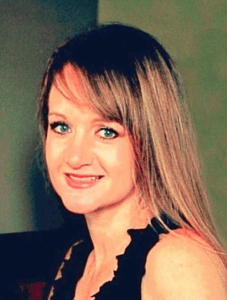 By Guest Blogger Dr. Katinka van der Merwe of the Spero Clinic
By Guest Blogger Dr. Katinka van der Merwe of the Spero Clinic
Disclaimer: As a chiropractor, I may not claim to treat specific conditions or diseases. My only objective is to find interference in the Central Nervous System and to remove it, enabling the body to function at its optimum potential once again. I am an independent doctor. Our clinic uses a unique combination of treatments. While these treatments may each individually be taught by various other groups/doctors, we are not affiliated with anyone else.
I often find myself talking to other physicians across the globe, and invariably, they ask me the same question: ‘Why RSD/CRPS? Why in the world would you choose to specialize in such a difficult condition?’ I always answer the same way: ‘How could I not? I have always maintained that CRPS picked me, I didn’t pick it. What do I mean by that? Let me share a little bit of my history with you.
I grew up in a family where I was taught that the body is a self-healing, self-regulating organism by my chiropractor dad. I was three years old when I decided that I too, wanted to be a chiropractor. I always believed that I would help people and make a difference after graduating. My actual first eight years in practice were very disappointing, however. I found myself treating ‘typical’ chiropractic patients. Neck pain, back pain, headaches and only the occasional complicated case. I felt bogged down, bored. I wanted to live with passion. I wanted to help people get their lives back. I wanted to be able to treat the most hopeless of hopeless. Where were my miracle cases? Just as I was ready to change careers, my life path changed dramatically.
I happened to be at a conference in Florida where I sat in a lecture taught by Dr. David Pascal, DC. Dr. Pascal practices in North Carolina, and works with some of the top U.S. Olympians as well as very complicated neurologic cases. That day, he was talking about helping a paraplegic patient to walk again after years of being confined to a wheelchair. I raised my hand and asked him what happened to that patient. I will never forget the two words that changed my life: “Uh…walking?” Walking?!? I was enthralled, as one of my dear patients, Tommy, had just become a full quadriplegic after a tragic accident. Could I perhaps help Tommy?! I followed Dr. Pascal into an elevator after his lecture and begged him to mentor me. I will never know why, but he agreed to take me under his wing. He told me that I was in for a tough road… and I embraced it.
One of the first techniques I learned centered around restoring balance to the Autonomic (automatic) nervous system, specifically the Vagus nerve (more about this nerve later). It was known to be extremely effective for Fibromyalgia. I was astounded by my results, and wondered what other kind of conditions I could help. Around this time, I met Carlos. Carlos had suffered from full body CRPS for six years, affecting his digestive system. When I met him, he could only eat a few spoons full of chicken broth at a time. This would cause him to curl up in excruciating pain for hours after each meal. Carlos was white as a sheet, and utterly without hope. His pain was carved into his face for the world to see. He came in with his wife. She told me that she was afraid that Carlos would take his own life if they could not find relief soon. She had convinced him to try just one more doctor. With them that day was their nine- month old baby, Sean. I remember looking at that little boy and trying to imagine his life without his father in it to see him grow up. Carlos finally looked up and said: ”You can’t help me. No one can help me. I am here because my wife asked me to come.”
Here was my moment. I felt the pressure of the world on my shoulders. What if I couldn’t help this man? It was my dream to treat patients like him, and when he finally arrived, I was petrified. My dad gave me a little pep talk in the back. “You asked for this. Patients will not come to your door step unless you could make a difference. It is not your responsibility to heal him, it is your responsibility to do your best. Now, get out there and do your thing!” And so I did. To my astonishment, his pain responded beautifully, dropping down dramatically. Carlos left my office that day in zero pain. He went straight to a Luby’s cafeteria (fine dining here in the South) and consumed his first full meal in five years. He came back the next day a changed man. His color was back, and also what I refer to as his ‘life spark.’ Twelve weeks later Carlos was completely pain- free. Today, almost five years later, he is still pain- free and working as a pastor. He now travels all over the world and has since faced several physical challenges, such as gallbladder surgery, with no sign of the CRPS rearing its ugly head again. Carlos considers himself to be in full remission these days. He always says that I saved his life, but honesty, Carlos saved mine. I was hooked. (You can watch Carlos’s original YouTube video here, https://youtu.be/tC_JyDfvexM right after he started treatment. You can watch his most recent video here https://youtu.be/pYE0aW1cTh8 that was recorded three years after he completed treatment).
From that day on, I became obsessed with helping people who suffers from this horrible, life robbing condition. I hunted down doctors and techniques from all over the world, determined to figure out how to beat this condition. If I heard that someone was having success treating CRPS, I wanted to know what they knew. Along the way, I got to witness some incredible recoveries. I was amazed at the results my staff and I were getting, yet frustrated that so few knew about it. I soon realized that another book was in my future. I could not sit on the information I now had in my hands, not sharing it. While researching my book, I realized that CRPS has touched many other doctors in a similar way. You cannot treat this condition and witness the path of destruction that it cuts across people’s lives, without becoming singularly obsessed with helping people who suffer from it recover. I am hardly the first physician to ever develop a passion to beat this thing. Early on my new path, a doctor once told me that seeing miracles, and being part of those miracles, is a very addictive thing. I can only agree with that statement wholeheartedly.
What makes our treatment different?
While learning how to treat the neurologic symptoms of CRPS, my basic holistic training and upbringing has come in very handy. That training has taught me that, unlike the mechanistic approach (that which most medical doctors follow today), the body is not like an engine. What I mean by that is that you cannot just treat different parts, forgetting that every part is connected to every other part. The body is incredibly intelligent, far above our understanding as human beings. Just think about all the trillions of functions happening in your body every second of every day, things we cannot even comprehend. Your immune system is fighting off invaders and cancer cells every day. Trillions of cells are being repaired or replaced, hormones are being produced, vitamins are being gathered from the food you eat and delivered to the cells that need them. All of this without a second thought from you. We readily expect our body to do these things every day. Yet, we just accept that somehow, our bodies become broken beyond repair, not smart enough to beat ‘incurable’ conditions. We accept that this power now rests in doctors’ hands, and that we will find ‘magic’ in some form of surgery, device or medication. Something outside of yourself.
All the scientists in the world cannot even grow a hair. Yet, our body does that every day. The intelligence that runs this all day doesn’t just desert some of us one day, causing us to suffer. So, how do we get sick then? Something interferes with the way our bodies are supposed to run and heal from the inside out. In my experience, and always in the case of CRPS, this interference typically happens in the Central Nervous System.
The Central Nervous System (CNS) is the system that runs everything in your body. It controls movement, function, your immune system, and pain. It also controls healing. The Autonomic Nervous System (ANS) is a subsystem of the CNS. It is the part of your brain that runs everything automatically, without you having to think about it. It is divided into the Sympathetic (fight or flight) Nervous system (SNS), and the Parasympathetic (rest or digest) nervous system (PNS). The SNS is responsible for saving our lives when we are being attacked. It is vital, but not overly concerned with healing, sexual function, digesting food, or relaxing. The PNS is. The one thing every CRPS patient has in common is that they are stuck in Sympathetic overdrive, meaning, instead of their nervous system being nicely balanced between these two states, they are stuck in Sympathetic overdrive. This often happens long before they ever develop CRPS.
The Vagus Nerve (VN) is one of twelve pairs of Cranial Nerves (CN) that run directly from the brain to the body, instead of from the spinal cord. The VN is the tenth cranial nerve and is the main Parasympathetic cranial nerve. The Vagus Nerve (meaning “wandering nerve”) has multiple branches that diverge from two thick stems rooted in the cerebellum and brainstem that wander to the lowest viscera of your abdomen, also connecting to your heart and most major organs along the way, such as the lungs. The VN supplies motor Parasympathetic fibers to ALL the organs except the adrenal glands, from the neck down to the transverse colon. The VN is responsible for many different tasks, including (but not limited to): heart rate, digestion, sweating, speech, coughing, fainting, and vomiting, to name but a few. Remember, people who suffer from CRPS also suffer from Sympathetic dominance (the schoolyard bully), causing the Parasympathetic nervous system to be suppressed and to shut down. This means that people who suffer from CRPS also suffer, by definition, from an underactive VN.
An underactive VN may be a result of an injury to your upper cervical spine (neck) directly, such as an old whiplash injury, a tailbone injury (affecting the neck indirectly) or as a result of an abnormally functioning ANS. Either way, malfunctioning of the nervous system is involved (by definition) when the Vagus Nerve is messed up. This will cause inflammation in one part (or all the parts) of the body. Basically, inflammation causes your nerves to be ‘on fire.’ What does the Vagus nerve have to do with inflammation? A lot, as you may guess.
Dr. Kevin Tracey, a neurosurgeon in New York, has done extensive research regarding this topic. Dr. Tracey set out to prove his hypothesis that the brain might be using the nervous system, and more specifically, the Vagus Nerve, to tell the spleen to switch off inflammation everywhere in the body. He derived at this idea before no one .has ever, after injecting an anti- inflammatory drug into a rat’s brain in an effort to minimize the effects of a stroke. To his astonishment, he found that this action not only turned off inflammation in the brain, but turned off inflammation in the entire body.
If Dr. Tracey was right, inflammation in body tissues was being directly regulated by the brain. This was an extraordinary idea. Before, no one has ever really explored whether the cells of the immune system were being directly controlled by the Vagus Nerve. Now, it was emerging that it was entirely possible that the brain, via the Vagus Nerve, was the force that governed it all.
His first study involved cutting the Vagus Nerve in rats. When Tracey and his team injected the anti-inflammatory drug into the brain, the drug no longer had an effect on inflammation in the rest of the body. Viola! The second test was to somehow stimulate the nerve without any drug in the system. “Because the Vagus Nerve, like all nerves, communicates information through electrical signals, it meant that we should be able to replicate the experiment by putting a nerve stimulator on the Vagus Nerve in the brainstem to block inflammation in the spleen,” he explained. “That’s what we did and that was the breakthrough experiment.”1
The Vagus Nerve works as a two-way highway, passing electrochemical signals between the organs and the brain. In chronic inflammatory disease, Tracey figured out, messages from the brain telling the spleen to switch off production of a particular inflammatory protein, tumor necrosis factor (TNF), weren’t going through. Low Vagal tone (or function) causes inflammation in the body. High Vagal tone (or function) causes the reversal of inflammation.
Good communication between the immune system and the brain is therefore vital for controlling inflammation. The inflammatory reflex is a mechanism in which afferent (body to brain) VN signaling, activated by cytokines or pathogens, is functionally associated with efferent VN -mediated output to regulate pro-inflammatory cytokine production and inflammation. VN stimulation suppresses local and serum pro-inflammatory cytokine levels 2. Cytokines are tiny proteins, acting as messengers. They can tum off or turn on inflammation anywhere in the body.
Of course, the problem in the body of a CRPS patients is that the VN is anything but communicating witl1 the body, and vice versa. It is much more like a traffic- clogged freeway, where few signals are making it through in either direction. Is it any wonder then that CRPS patients are literally burning alive from the inside?
HOW CHRONIC INFLAMMATION CAUSES PAIN IN CRPS
Remember cytokines? It has been shown that certain cytokines are involved in not only the initiation but also the persistence of pathologic (abnormal) pain by directly activating nociceptive sensory neurons (nocireceptors are the nerves which sense and respond to parts of the body which are damaged). A good example of nociceptive pain is the pain experienced after burning. Certain inflammatory cytokines are also involved in nerve injury (and inflammation-induced) central sensitization.
If you suffer from CRPS, you should care a lot about central sensitization. It is based on the principle that basically, pain itself may change the way the central nervous system works (meaning the brain and spinal cord), causing more pain, and causing the patient to become hypersensitive with less provocation. Sensitized patients are not only sensitive to things that would cause normal people pain, but also become sensitive to things that shouldn’t hurt. Sound familiar? Any kind of noxious (‘bad’) stimuli can trigger this reaction. Anything that hurts the skin, muscles, or organs. This pain can become constant and stick around even without provocation.
Certain inflammatory cytokines in dorsal root ganglion (or DRG), a collection of afferent sensory nerves that exists just outside of the spinal cord, injured nerves or skin, are known to be associated with specific pain behaviors and with the abnormal spontaneous activity from injured nerve fibers or neurons. Following a peripheral nerve injury, immune cells that gather around the injured nerve(s) secrete cytokines. Localized inflammatory irritation of the dorsal root ganglion (DRG) not only increases pro-inflammatory cytokines but also decreases anti-inflammatory cytokines. There is abundant evidence that certain pro-inflammatory cytokines ate involved in the process of pathological (abnormal) pain 3. It is like a wildfire, feeding upon itself to then start burning out of control. In a nutshell, it causes the symptoms of CRPS.
In addition, a malfunctioning VN will also cause immune system problems, digestive issues (typically treated as a separate problem in CRPS patients), sleeping problems, and a lack of sexual desire.
Our treatment focuses on restoring immediate normal flow, tone and function to the VN. Our treatment has no side effects. If our treatment can help you, we typically will notice a dramatic decrease in pain in the first week, if not the first day. Unlike most treatments out there today, we do not aim to disrupt or numb the pain signals. We feel that that approach is invasive and temporary, like a band aid. While we cannot legally claim to heal CRPS, we do aim to uncover abnormalities in the CNS and restore balance to the Nervous System. The healing occurs from the inside out.
Why does the VN malfunction? It can happen for several reasons, or usually a combination of factors. I like to refer to CRPS as not caused by one single factor, but rather a combination of factors, or ‘the perfect storm’. These factors may include (as previously mentioned), neck and/or tailbone injuries, generic factors, toxicity, inflammation, viral or bacterial infections, emotional stress, and many more.
Our ‘Three Punch’ System
Through the years, we have perfected our treatment regimen into something I now refer to as our ‘Three Punch’ system. As in, three punches and you ate out. We first use a technique that gently removes any pressure from the VN, instantly restoring function to that nerve and causing it to shut down inflammation in the nerves. What does this mean to you? An immediate decrease in pain. This procedure has to be repeated very often over an initial ten week treatment period. This is because the ligaments in your upper cervical spine may be used to the old ‘wrong’ position. There may also be scarring in the spine and/ or soft tissues. All of these structures have to become used to their new corrected position. Think of braces on your teeth. It won’t work if you only wear it for one day.
Second, we treat the body with Frequency Specific Microcurrent (FSM). What is Microcurrent? It is a very small current, too small to be detected by the sensory nerves. Therefore, it is not painful. It is the same kind of current your body naturally produces in each cell. It is also FDA approved. At least one study has shown that microcurrent increased ATP production in rat skin 500%. ATP is the chemical that the body uses for energy in order to perform all its functions, including healing. The current also increased amino acid transport into the cells by 70%, as well as waste product removal4•
Carolyn McMakin, DC is one of my favorite mentors. She and George Douglas DC developed a system whereby we use specific frequencies clinically, using the FSM device, effective in treating different conditions, including CRPS. Doctor McMakin used this system to treat her own son successfully for CRPS. When combined with our two other systems, we find that this treatment is an incredibly effective part of the treatment of the neurologic symptoms of CRPS.
Lastly, we use a system called Quantum Neurology, developed by Dr. George Gonzalez, DC. This system was designed to rehabilitate every aspect of the Nervous System. Dr. Gonzalez developed this system in order to treat his wife, Lori, after she suffered a spinal cord injury. After seeing countless famous doctors all over the country, Dr. Gonzalez realized that no single system existed that was designed to rehabilitate the nervous system. His work was based upon the premise that if the body suffers from a chronic injury, the brain will eventually start ‘ignoring’ this injury. The reason for this is that the injury will act as an ‘energy vampire’, robbing the rest of the body of energy on a daily basis in order to rush the stolen energy to the sight of the chronic injury, much like a slow ‘energy leak’.
In order to heal ‘glitches’ in the nervous system, we must first ‘show’ the brain (or remind it) that the nervous system is injured, and then assist the brain in healing the injury. We use this system to very gently heal the abnormal sensory nerves (causing you to be in pain when exposed to heat, cold, deep pressure, pain, light pressure, vibration, and circumferential pressure, such as tight clothes). This is not the same as the physical therapy sensory rehabilitation that most CRPS patients are used to, that focuses on continuing to expose the sensory nerves to a specific sensory stimulation, hoping to cause a ‘numbing down’ effect after a while, almost like a callous. Instead, our system consists of the premise that the injury is pointed out to the brain, and then gently assisted in fixing the ‘glitch’, often instantly, although re-injury may quickly happen in the beginning. The nervous system has to build up stamina and strength, at which point the corrections become permanent.
As stated previously, our system works best when all components mentioned above are used together. There are no side effects to our treatment. Unfortunately, at this time, we are the only clinic in the US to apply the ‘three punch’ system. That means that you have to travel to Arkansas for ten weeks in order to get treated in our clinic.
The ‘Secret Sauce”
One thing I haven’t mentioned yet is what I refer to as ‘the secret sauce’. What do I mean by this? The secret ingredient to every patient I have ever watched recover is spirit. It takes tremendous courage to keep looking for ways to recover, regardless of how many times you have been disappointed in the past. It takes grit! I often find myself across from a new patient, holding their two- inch thick medical file, filled with medical records. Each one of those records represents a time when you sat across from a doctor, looking for answers, looking for help, hoping that this time will give you back your life again. My heart goes out to you, it truly does. Yet, you cannot give up. You cannot stop looking for ways to aid your body in recovering, no matter how many times you have been disappointed.
The other side of this coin is that you need a doctor who, above all else, truly cares about you. Doctors are not gods. They are not power figures who may not be questioned. We work for you. Like any good employee, if we are to help you, we have to listen to you and care about you. I throw my passion into every single case that I treat. Every patient represents a goal to me. When listening to my patients, I don’t just want to hear about their pain, I want to know what CRPS took away from them. What is it that they miss? Is it to walk their beloved dog? To travel with their husband?
To work in the job they love? To enjoy their grandchildren? These are the things I want them to get back.
This is the reason I have a fire burning in my heart, and passion filling my days. It is not just about beating the monster… it’s about being charged and blessed with the responsibility to help guide people just like you back to life, instead of merely surviving and living ‘around’ your pain. You deserve to live with passion again. You deserve to be happy. You deserve to be alive again with joy.
References
1 K. Tracey. The inflammatory Reflex. Nature, 2002.
2 L. Borovikova. Vagus nerve stimulation attenuates the systemic inflammatory response to endotoxin. Nature, 2000.
3J. Zhang, J. Cytokines, Inflammation and Pain. International Anesthesiology Clinics, 2007.
4N. Cheng. The effects of electric currents on ATP production, protein synthesis and membrane transport in rat skin. Clinical Orthopedics, 1982.
Dr. Katinka van der Merwe grew up in South Africa before immigrating to the United States when she was twenty. She was formally trained as a chiropractor. She received her degree in 1999 from Parker College of Chiropractic in Dallas, TX. Dr. Katinka has since expanded her coursework in Neurology, Biological Medicine, and Junctional neurology, focusing on helping complicated and ‘hopeless’ neurologic cases, using cutting edge techniques that focus on restoring proper junction and balance to the Central Nervous System. Dr. Katinka is qualified as a Quantum Neurologist and has also studied under Dr. Thomas Rau, MD, clinical director of the world famous Paracelsus clinic in Switzerland. Dr. Katinka is the author of ‘Taming the Beast: A Guide to Conquering Fibromyalgia”; available on Amazon, as well as the soon to be released “Putting Out the Fire: New Hope for RSD/ CRPS.’ Dr. Katinka was the recipient of the prestigious ‘Rising Star’ award in Tampa, Florida in 2012, as well as several awards for her ongoing work with RSD/ CRPS. Dr. Katinka lectures extensively to fellow physicians as well as the public. She practices in Northwest Arkansas where she lives with her husband and four children.
 By Guest Blogger Barbara Wall, Power Over Pain of Arkansas
By Guest Blogger Barbara Wall, Power Over Pain of Arkansas
 By Autumn Strand for the RSDSA blog.
By Autumn Strand for the RSDSA blog. By Corey W. Hunter, MD for the RSDSA blog.
By Corey W. Hunter, MD for the RSDSA blog.
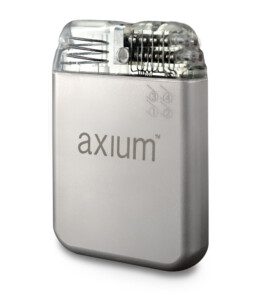
 By Guest Blogger Dr. Katinka van der Merwe of the
By Guest Blogger Dr. Katinka van der Merwe of the 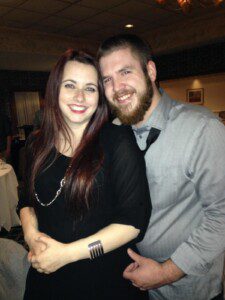 By Samantha Barrett, Special Events Coordinator
By Samantha Barrett, Special Events Coordinator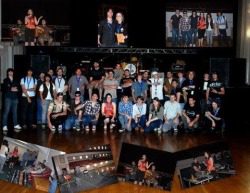
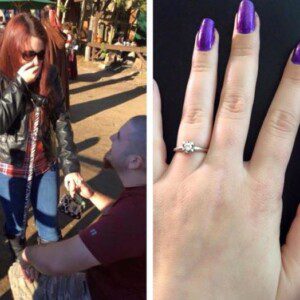 By Samantha Barrett, Special Events Coordinator
By Samantha Barrett, Special Events Coordinator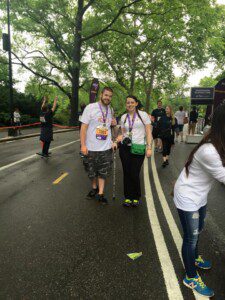



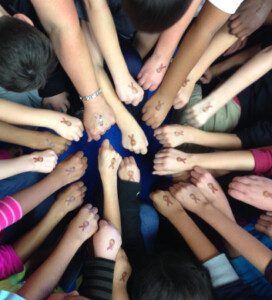 By Guest Blogger Suzanne Stewart. Originally Featured on her
By Guest Blogger Suzanne Stewart. Originally Featured on her 